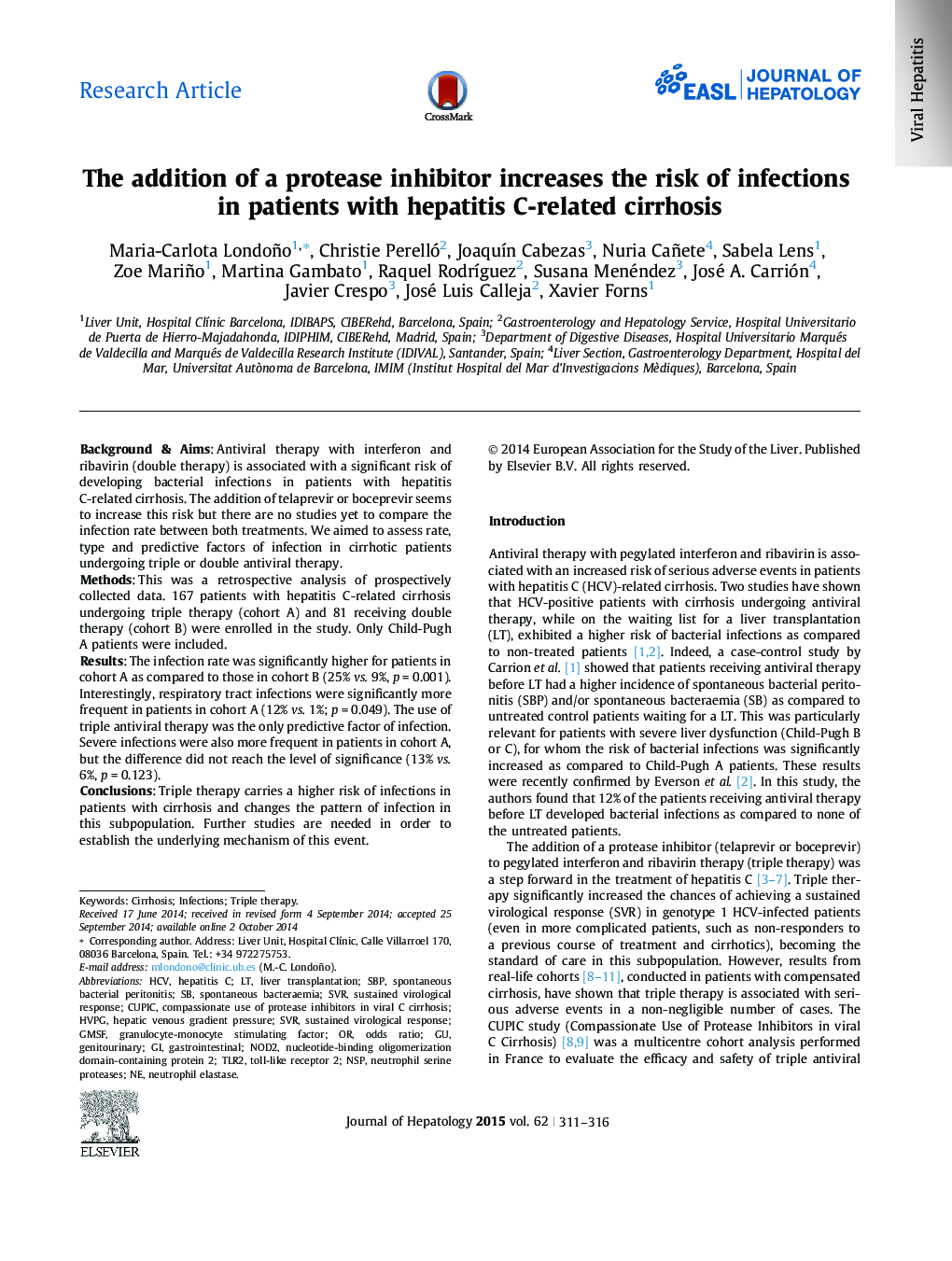| کد مقاله | کد نشریه | سال انتشار | مقاله انگلیسی | نسخه تمام متن |
|---|---|---|---|---|
| 6102581 | 1211118 | 2015 | 6 صفحه PDF | دانلود رایگان |

Background & AimsAntiviral therapy with interferon and ribavirin (double therapy) is associated with a significant risk of developing bacterial infections in patients with hepatitis C-related cirrhosis. The addition of telaprevir or boceprevir seems to increase this risk but there are no studies yet to compare the infection rate between both treatments. We aimed to assess rate, type and predictive factors of infection in cirrhotic patients undergoing triple or double antiviral therapy.MethodsThis was a retrospective analysis of prospectively collected data. 167 patients with hepatitis C-related cirrhosis undergoing triple therapy (cohort A) and 81 receiving double therapy (cohort B) were enrolled in the study. Only Child-Pugh A patients were included.ResultsThe infection rate was significantly higher for patients in cohort A as compared to those in cohort B (25% vs. 9%, p = 0.001). Interestingly, respiratory tract infections were significantly more frequent in patients in cohort A (12% vs. 1%; p = 0.049). The use of triple antiviral therapy was the only predictive factor of infection. Severe infections were also more frequent in patients in cohort A, but the difference did not reach the level of significance (13% vs. 6%, p = 0.123).ConclusionsTriple therapy carries a higher risk of infections in patients with cirrhosis and changes the pattern of infection in this subpopulation. Further studies are needed in order to establish the underlying mechanism of this event.
100
Journal: Journal of Hepatology - Volume 62, Issue 2, February 2015, Pages 311-316